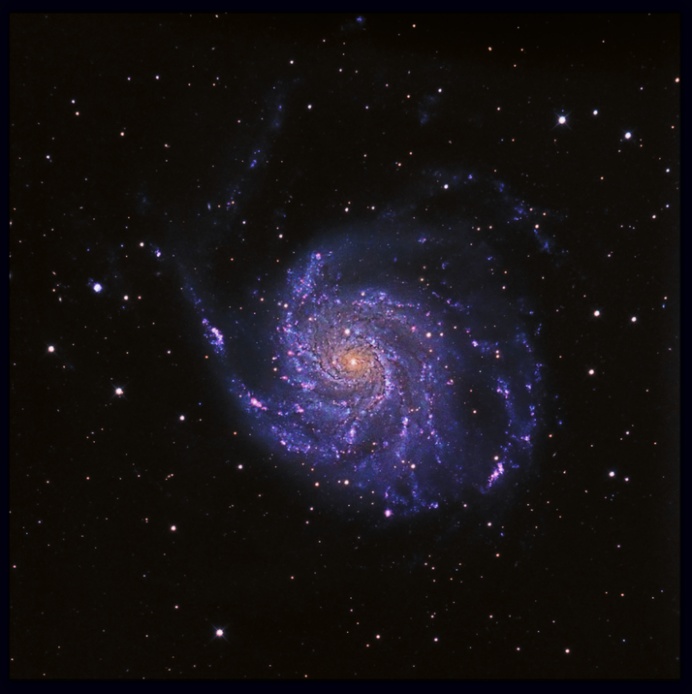|
|
Galaxies M101 |  | (CLICK REFRESH ON YOUR BROWSER IF IT DOESN'T APPEAR)
Equipment and exposition:
GSO RC 8" F/8
ATIK 383L+ with Orion Nautilus Usb filter wheel, Astronomik Filters 50,8
Guided with Starlight Lodestar with Orion OAG
Neq6 Geoptik Modded
L : 12 X 700 Secs. bin 1x
RGB : 4 x 700 Sec.s (Each channel) bin 1x
Processed with PixInsight ,Maximdl,Photoshop CS4
SIte : Saint-Barthelemy, Nus, Aosta Italy 1/04/2011
FULL SIZE
Awards:
NUOVO ORIONE SETTEBRE 2011
About this object:
The Pinwheel Galaxy (also known as Messier 101 or NGC 5457) is a face-on spiral galaxy distanced 25 million light-years (eight megaparsecs) away in the constellation Ursa Major, first discovered by Pierre Mechain on March 27, 1781, and communicated to Charles Messier who verified its position for inclusion in the Messier Catalogue as one of its final entries.
M101 is a relatively large galaxy compared to the Milky Way. With a diameter of 170,000 light-years it is seventy percent larger than the Milky Way. It has a disk mass on the order of 100 billion solar masses, along with a small bulge of about 3 billion solar masses.
Another remarkable property of this galaxy is its huge and extremely bright H II regions, of which a total of about 3,000 can be seen on photographs.[citation needed] H II regions usually accompany the enormous clouds of high density molecular hydrogen gas contracting under their own gravitational force where stars form. H II regions are ionized by large numbers of extremely bright and hot young stars.
On photographs M101 can be seen to be asymmetrical on one side. It is thought that in the recent past (speaking in galactic terms) M101 underwent a near collision with another galaxy and the associated gravitational tidal forces caused the asymmetry. In addition, this encounter also amplified the density waves in the spiral arms of M101. The amplification of these waves leads to the compression of the interstellar hydrogen gas, which then triggers strong star formation activity.
Text from : wikipedia |
|
|
|
|
|

